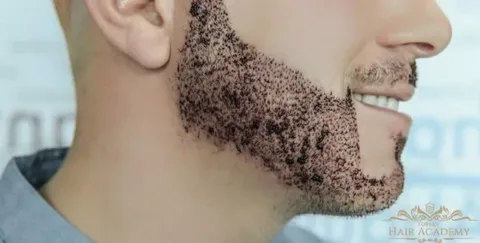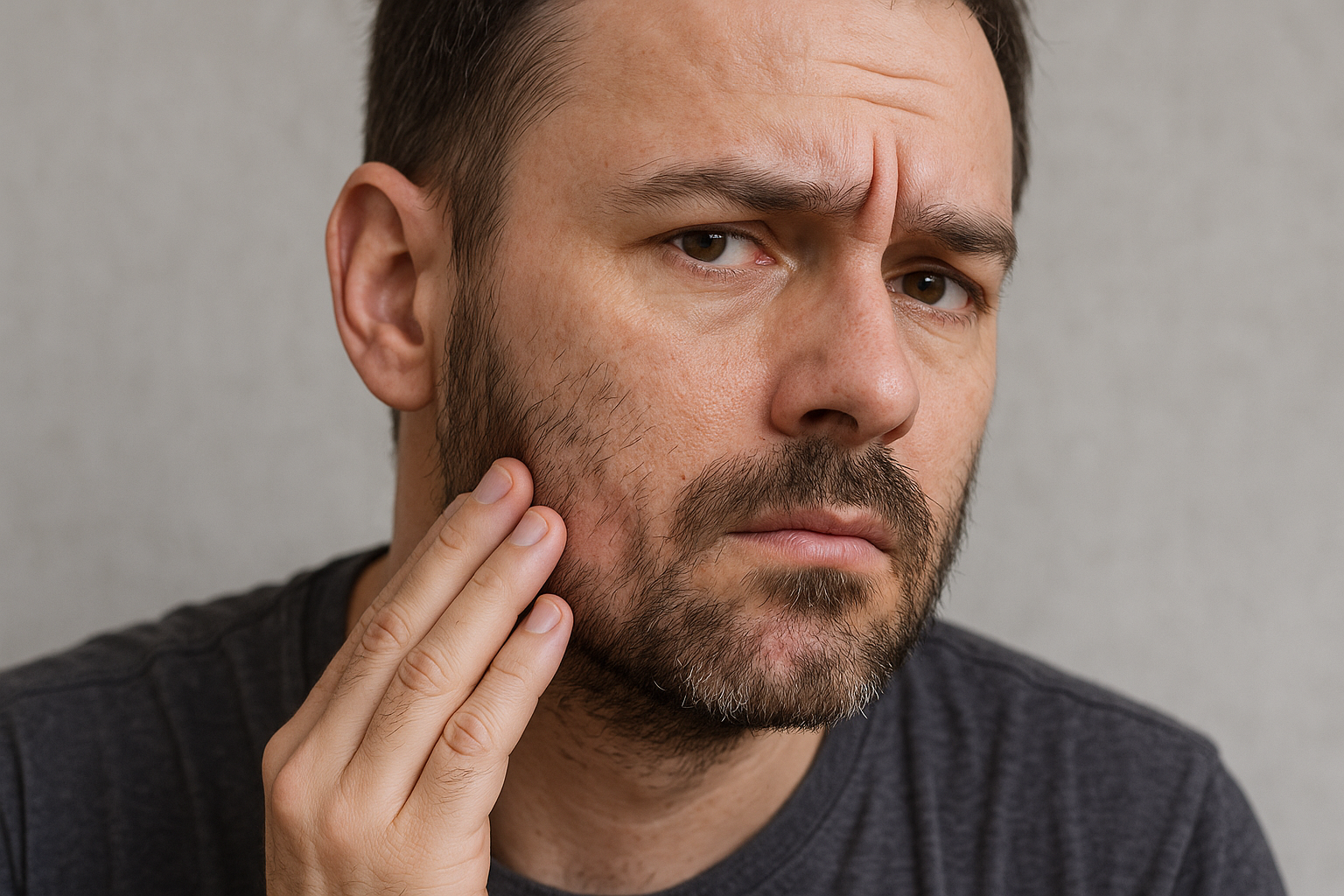Experiencing hair loss with limited scalp donor hair can feel limiting, especially when traditional transplants aren’t an option.
Beard to Scalp Transplant provides a reliable alternative by using your facial hair to rebuild scalp density. This method increases donor availability, offers thicker coverage, and is growing in popularity among patients worldwide.
In this guide, you’ll learn about the benefits, risks, recovery process, and expert-backed advice to help you make an informed decision.
What Is a Beard to Scalp Transplant?
A beard-to-scalp transplant is a type of hair restoration procedure where follicles are extracted from the beard area—typically the jawline, chin, and neck—and implanted into balding areas of the scalp.
This technique is especially beneficial for:
- Individuals with extensive hair loss and limited scalp donor hair
- Patients seeking higher hair density for the crown or mid-scalp regions
- Those who’ve had prior transplants and require more grafts
How it compares to traditional transplants:
- Traditional transplants rely on donor follicles from the back or sides of the scalp.
- Beard follicles are typically thicker, providing denser coverage when implanted on the scalp.
- Facial hair grows in single follicles, making it ideal for adding volume, not necessarily for delicate hairline zones.
Benefits of Using Beard Hair for Scalp Restoration
Choosing beard follicles opens up several advantages for suitable candidates:
- Increased donor supply: Facial hair significantly expands the available graft pool for those with depleted scalp areas.
- Thicker hair strands: Beard hair is naturally coarse, offering excellent volume when used in the crown or mid-scalp.
- Minimal scarring: Using FUE (Follicular Unit Extraction) ensures small, barely visible scars at the donor site.
- Faster healing: Beard donor zones tend to recover quickly, often within a week.
- High survival rate: According to leading specialists like Dr. Rana Irfan, beard follicles have a strong graft survival record when implanted properly.

Potential Risks and Considerations
While effective, this method has limitations and risks to consider:
- Texture mismatch: Beard hair is usually coarser and curlier than scalp hair. Blending it with scalp hair requires skilled implantation for a natural look.
- Color differences: If your beard and scalp hair differ significantly in color, it may affect the visual uniformity.
- Scarring or hypopigmentation: Though minimal, there’s a chance of small white dots at the beard donor site.
- Risk of folliculitis: Post-surgery, some patients may experience minor inflammation or ingrown hairs.
- Expertise required: This is a precision-based procedure. Results are significantly better when performed by an experienced hair restoration surgeon.
Step-by-Step Procedure Overview
Pre-Operative Consultation
- Scalp and beard evaluation: The surgeon assesses both areas for hair quality, density, and viability.
- Goal setting: Patients share their expectations while surgeons map out a realistic, strategic hair restoration plan.
Follicular Unit Extraction (FUE) Technique
- Tiny, round punches (typically 0.7mm to 0.9mm) are used to extract individual beard follicles.
- The procedure is done under local anesthesia with minimal discomfort.
- Harvested grafts are stored in a sterile solution before implantation.
Implantation Process
- Grafts are placed carefully into thinning areas of the scalp, ensuring the right angle, direction, and density.
- Beard grafts are most commonly used in the crown and mid-scalp, rather than the hairline.

Recovery Timeline and Aftercare
A smooth recovery process ensures optimal results. Here’s what to expect post-op:
First Week Post-Surgery
- Mild redness and swelling in both donor and recipient areas
- Start gentle hair washing on day 3–4 using saline or doctor-recommended shampoo
- Avoid touching or scratching the scalp
Weeks 2–4
- Shedding phase begins—transplanted hairs fall out temporarily
- Avoid heavy physical activity, sun exposure, and swimming
Months 1–3
- Transplanted hairs start regrowing slowly
- Continued care with mild products and medications (as prescribed)
Months 4–12
- Gradual and visible hair growth in the transplanted zones
- Final resultsare typically seenn by month 12, with up to 90% graft survival
Pro Tip: Stay consistent with follow-up visits and prescribed medications (e.g., finasteride, minoxidil) to support regrowth.
Expert Insights and Case Studies
According to Dr. Rana Irfan, a leading FUE specialist in Pakistan, beard follicles are among the most robust donor sources, especially for patients with multiple transplant sessions.
“We’ve seen excellent density improvement using beard hair, especially in cases where scalp supply is limited. The key is strategic planning and precise implantation.” – Dr. Rana Irfan
Patient Example:
- 38-year-old male, Norwood 6 pattern, two previous FUT sessions
- Used ~2,000 beard grafts for the crown area
- Visible growth by month 5, full density by month 10

Frequently Asked Questions (FAQs)
How does beard hair differ from scalp hair?
Beard hair is thicker, curlier, and grows in single-follicle units, making it ideal for density but less suitable for hairline design.
Will my beard look patchy after extraction?
No. When done correctly using FUE, only scattered follicles are removed, minimizing visible thinning.
Can beard hair be used for the hairline?
It’s not ideal. Hairlines require softer, finer hair, typically harvested from the nape or sides of the scalp.
How much does a beard-to-scalp transplant cost?
It varies based on graft count and clinic. In Pakistan, the average cost ranges between PKR 100,000 – 250,000 ($350–900 USD).
Is the procedure permanent?
Yes. Beard hair, once implanted, continues to grow like scalp hair—permanently.
Conclusion
A beard-to-scalp transplant is a smart, safe, and highly effective solution for individuals with limited scalp donor supply.
It provides thicker coverage and high graft survival, especially in the crown or mid-scalp areas. That said, results depend heavily on the surgeon’s experience, planning, and proper aftercare.
Ready to take the next step toward a fuller head of hair?
Book a consultation with Dr. Rana Irfan in Islamabad—a leading authority in advanced hair restoration using beard follicles.
